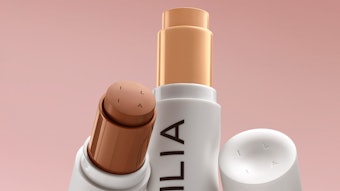In “Should Procter & Gamble Divest its Fragrance and Colour Business to Improve Growth?,” a new blog post from Euromonitor International senior analyst for home and personal care Oru Mohiuddin, the market research companies looks at opportunities for growth for the CPG giant.
Mohiuddin writes, “A key factor contributing to Procter & Gamble’s less encouraging performance than its competitors in recent quarters has been a lack of synergy between the product categories in its portfolio. Procter & Gamble’s results have been less satisfactory since the onset of the economic downturn, leading the company to undertake a number of measures, including streamlining its portfolio and launching a new restructuring program in 2012. In the most recent October–December quarter in 2012, Procter & Gamble was more upbeat but reported growth for the overall company was flat and for its beauty and grooming division was -0.4%, compared with 10% overall for Unilever, 14% for Unilever’s personal care business and 9% for L’Oréal over the same period.”
Identifying streamlining opportunities, Mohiuddin notes, “Premium fragrances appear to be a misfit in Procter & Gamble’s portfolio, requiring a different distribution platform to its other products. Moreover, Procter & Gamble generates only 6% of its total beauty and personal care revenue from premium fragrances. Unilever, with a similar operational structure to Procter & Gamble, previously had a presence in premium fragrances but divested the business to Coty in 2005 in a drive to streamline its portfolio. Divesting its premium fragrances enabled Unilever to group its categories according to a common distribution platform, thus helping the company to achieve distribution synergies. Unilever’s objective is to achieve more in-depth category coverage in supermarket aisles by covering the various pricing platforms and sub-categories. For example, in hair care, it is present with mass and masstige salon-inspired brands such as VO5 (outside the U.S.), TreSemmé and Nexxus, while in retail hair care Sunsilk has a mass price positioning and Dove more premium positioning. By narrowing its focus to supermarket categories, Unilever was better placed to establish a stronger presence while benefiting from greater distribution synergies.”
Mohiuddin also notes that a sharper focus could help P&G. “Procter & Gamble is also coming under greater competitive pressure from companies heavily focused on beauty, such as L’Oréal,” she writes. “Mass facial care and color cosmetics are increasingly being driven by product sophistication, requiring greater investment in R&D and more frequent product launches. One of L’Oréal Paris’s new launches is Age Perfect Renaissance Cellulaire for women over 50, with Julianne Moore its brand ambassador. Age Perfect Renaissance Cellulaire claims to restore intercellular communication and boost cellular vitality by protecting mother cells and providing energy to cells to maintain their metabolic rate. In addition, L’Oréal’s mass brands copy the formulations of premium brands, which adds to the value proposition in the mass segment while also raising the bar for competitors. For example, the formulation of Génifique, offered under the Lancôme label, is similar to that of L’Oréal Paris’s Youth Code. In color cosmetics, L’Oréal launched Maybelline New York Superstay 24hr Lipcolour, which claims to stretch the limits of longwear.
“Although Procter & Gamble has launched a number of new products, it has been unable to maintain the same pace of innovation, made more difficult by having to balance R&D resources across its highly diverse portfolio, ranging from laundry care and shaving to oral care and skin care,” she continues. “Consequently, Olay saw its share of U.S. facial care fall by 0.9 percentage points in 2012 while that of L’Oréal Paris rose by 0.3 percentage points. Similarly, Olay’s share in facial care in China, projected to drive absolute growth of skin care globally, and where Olay is the leading brand, fell by 0.6 percentage points compared to a 0.3 percentage point gain for L’Oréal Paris. A similar situation was also evident in color cosmetics, where Procter & Gamble’s key color cosmetics brand Cover Girl lost 0.6 percentage points compared with a 0.2 percentage point gain for Maybelline in the U.S. market.”
Mohiuddin notes that, “In light of this, divesting premium fragrances, following Unilever’s example, could be the way forward for Procter & Gamble. However, beyond that, it could also consider withdrawing from core beauty categories entirely. Color cosmetics account for 6% of Procter & Gamble’s total beauty and personal care sales compared to 10% for skin care. Given that Olay is a globally recognized brand and its key color cosmetics brand Cover Girl is mostly based in the U.S., it could consider divesting its color cosmetics business and investing the proceeds in making its skin care brands more competitive. This way, the company could benefit from a portfolio that shares a common distribution platform, while also retaining its skin care business.”










